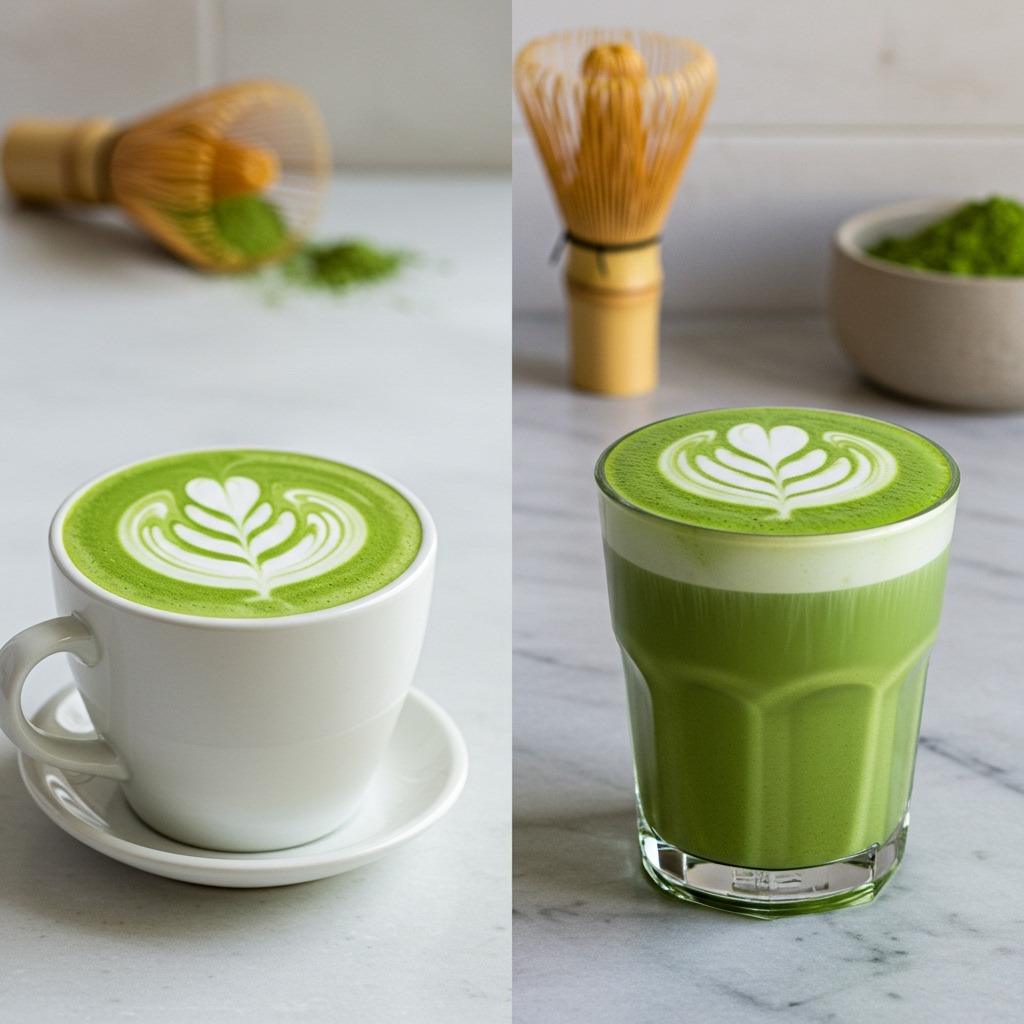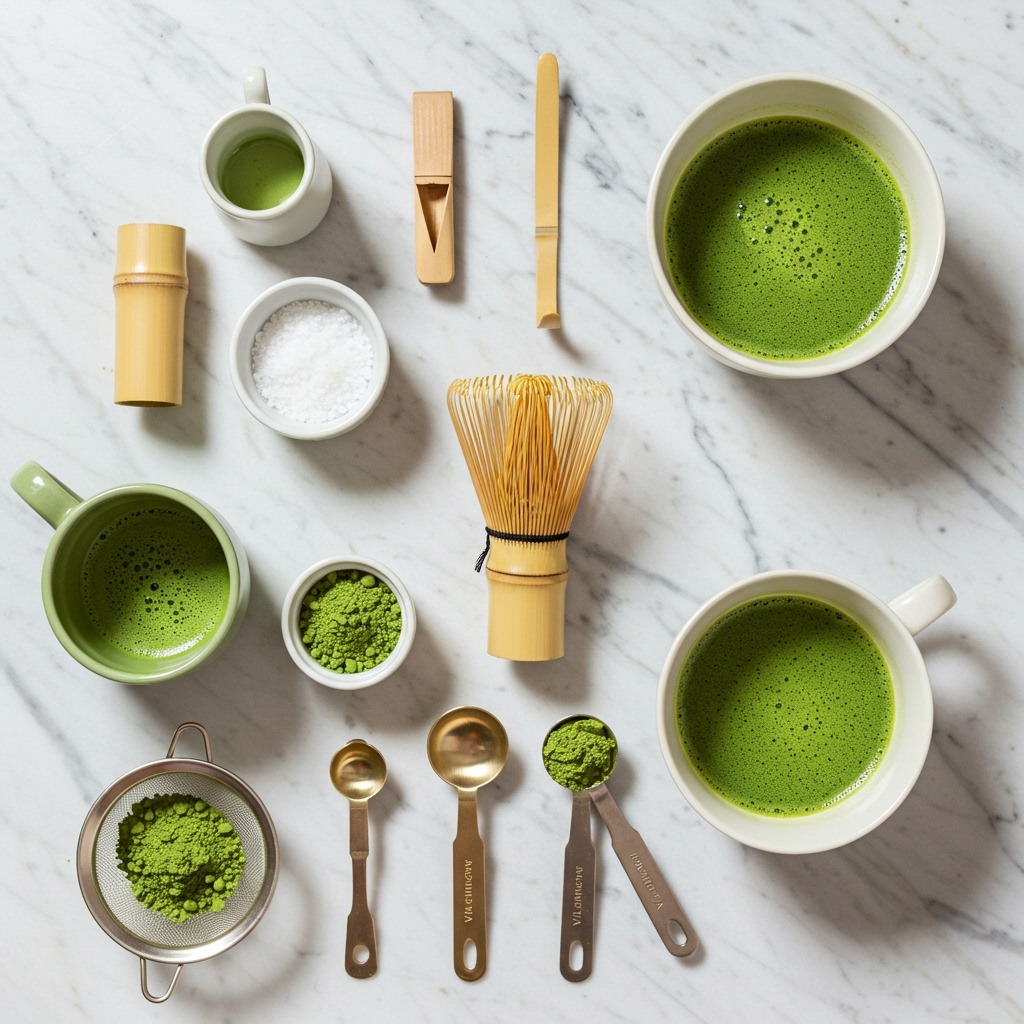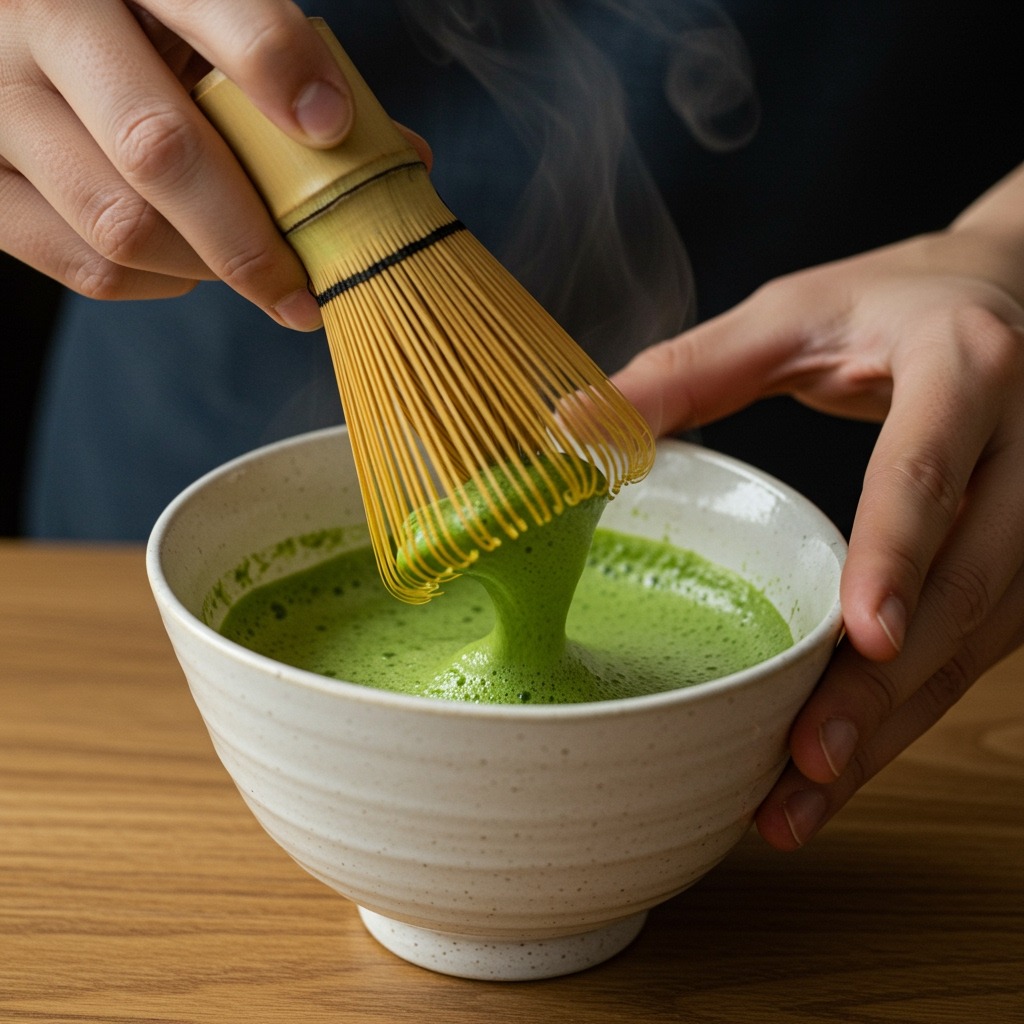Ever craved that vibrant green, creamy matcha latte you get from your favorite cafe? That smooth, earthy flavor with a hint of sweetness, giving you a gentle, focused energy boost without the jitters? It’s a truly unique experience. But let’s be honest, buying one every day can hit your wallet hard, and sometimes, they just don’t hit the spot like you hoped.
Are you tired of watery, clumpy, or bland matcha lattes at home? Do you wish you could consistently recreate that café-quality drink without the guesswork? You’re in the right place. Mastering your own matcha latte recipe at home is easier than you think, and it’s incredibly rewarding. This guide will walk you through everything you need to know, from selecting the right matcha to whisking it to perfection, so you can enjoy a delicious, balanced, and beautiful matcha latte, hot or iced, anytime you want. Get ready to elevate your daily ritual!

Understanding Matcha: More Than Just Green Powder
Before we dive into whisking, let’s understand what makes matcha so special. It’s not just any green tea.
What is Matcha?
Matcha is a finely ground powder made from specially cultivated green tea leaves. Unlike traditional green tea, where leaves are steeped and then discarded, with matcha, you consume the entire leaf. This unique consumption method is what gives matcha its potent flavor and impressive health benefits. The tea plants destined for matcha are shade-grown for several weeks before harvest. This process boosts chlorophyll production, giving matcha its distinct bright green color and contributing to its rich, umami flavor. It also increases L-Theanine, an amino acid that provides a calm, focused energy.
Grades of Matcha: Quality Matters
Not all matcha is created equal. Understanding the different grades helps you choose the right powder for your latte.
- Ceremonial Grade: This is the highest quality matcha, known for its vibrant green color, smooth texture, and naturally sweet, less bitter taste. It’s designed to be whisked simply with hot water and drunk on its own, but its superior flavor makes it the best choice for lattes. You’ll notice a significant difference in taste and color compared to lower grades.
- Culinary Grade: This matcha is more robust and slightly more bitter, making it ideal for incorporating into food and beverages where other ingredients will balance its flavor. It’s often used in baking, smoothies, and other recipes. While you can use it for lattes, you might need more sweetener to achieve the desired taste.
Benefits of Matcha: Sip Your Way to Wellness
Matcha isn’t just delicious; it’s packed with benefits that make it a fantastic addition to your daily routine.
- Sustained Energy: Thanks to the L-Theanine, matcha provides a calm alertness, avoiding the sharp peaks and crashes often associated with coffee. It offers a more gentle and prolonged energy release. For more on the energy differences, you can explore matcha caffeine vs coffee.
- Antioxidants: Matcha is loaded with powerful antioxidants, particularly catechins, which help combat free radicals in the body.
- Focus and Calm: L-Theanine promotes relaxation without drowsiness, enhancing focus and mental clarity. It’s why many people find matcha helps them concentrate.
Essential Tools for Your Matcha Latte
While you don’t need a full barista setup, a few key tools can make a significant difference in the quality and smoothness of your homemade matcha latte.

Bamboo Whisk (Chasen) and Bowl (Chawan)
These traditional Japanese tools are the gold standard for whisking matcha.
- Why They’re Ideal: The fine tines of a bamboo whisk effectively break up matcha clumps and create a smooth, frothy layer, ensuring your latte is silky and lump-free. The wide, shallow design of a chawan (matcha bowl) provides ample space for vigorous whisking. If you’re serious about your matcha, investing in these is highly recommended.
Alternatives for Whisking
Don’t have a chasen? No problem! You can still make a great matcha latte.
- Electric Frother: A small handheld electric frother works wonders for quickly dissolving matcha and creating a frothy layer. It’s also great for frothing your milk.
- Small Whisk or Fork: In a pinch, a small kitchen whisk or even a fork can work, but you’ll need a bit more elbow grease and patience to get rid of all the clumps.
- Blender: For larger batches or super smooth results, a blender can also be used, especially for iced lattes.
Other Useful Tools:
- Fine-Mesh Sieve: Always sift your matcha powder before whisking to prevent clumps. This is a small step that makes a huge difference.
- Measuring Spoons: Precision is key for the best flavor balance.
- Milk Frother: For hot lattes, a dedicated milk frother (manual or automatic) creates that perfect creamy foam.
The Basic Matcha Latte Recipe: Hot Version
Let’s start with the classic: a warm, comforting matcha latte perfect for a cozy morning or an afternoon pick-me-up.
Ingredients:
- Matcha powder: 1-2 teaspoons (use ceremonial grade for the best results). Adjust to your preferred strength.
- Hot water: 2-3 ounces, ideally around 175°F (80°C). Avoid boiling water, as it can burn the matcha and make it bitter.
- Milk of choice: 6-8 ounces (dairy or non-dairy, such as oat, almond, or soy).
- Sweetener (optional): 1-2 teaspoons of honey, maple syrup, agave, or your preferred sweetener.
Step-by-Step Instructions:
- Sift Matcha: Place a fine-mesh sieve over your matcha bowl (or mug). Measure out 1-2 teaspoons of matcha powder and sift it into the bowl. This crucial step prevents lumps!
- Add Hot Water: Pour 2-3 ounces of hot, not boiling, water over the sifted matcha.
- Whisk Until Frothy: Using your bamboo whisk (chasen) or electric frother, vigorously whisk the matcha and water in an “M” or “W” motion. Continue whisking for 30-60 seconds until the mixture is smooth, lump-free, and a vibrant layer of frothy foam appears on top.
- Heat and Froth Milk: While you’re whisking the matcha, heat your chosen milk in a saucepan on the stove (don’t boil!) or using a microwave until hot but not boiling. Then, froth the milk using a milk frother, steam wand, or by shaking it vigorously in a sealed jar until foamy.
- Combine Matcha and Milk: Pour the frothed milk into your favorite mug. Gently pour the whisked matcha tea over the milk. You can pour it directly into the center for a layered effect, or stir it in.
- Sweeten (Optional): Add your desired sweetener and stir until dissolved. Sip and enjoy your perfectly crafted hot matcha latte!
Iced Matcha Latte Recipe: A Refreshing Twist

When the weather warms up, or you just prefer a cool, invigorating drink, the iced matcha latte is your go-to.
Ingredients:
- Matcha powder: 1-2 teaspoons (ceremonial grade recommended).
- Hot water: 2-3 ounces (175°F/80°C).
- Milk of choice: 6-8 ounces (dairy or non-dairy).
- Sweetener (optional): 1-2 teaspoons of honey, maple syrup, or simple syrup.
- Ice: Plenty of it!
Step-by-Step Instructions:
- Sift and Whisk Matcha: Sift 1-2 teaspoons of matcha powder into your matcha bowl. Add 2-3 ounces of hot (not boiling) water. Whisk vigorously with a bamboo whisk or electric frother until smooth, lump-free, and frothy.
- Add Sweetener (Optional): If using a liquid sweetener like maple syrup or honey, stir it into the whisked matcha at this stage to ensure it dissolves completely.
- Prepare Your Glass: Fill a tall glass to the brim with ice cubes.
- Pour Milk: Pour 6-8 ounces of your chosen milk over the ice.
- Layer (or Stir): Gently pour the whisked matcha mixture over the milk and ice. Watch as the vibrant green cascades through the white milk—it’s quite satisfying! You can stir it gently to combine or enjoy the layered effect.
Tips for Your Best Matcha Latte Ever
Elevate your matcha latte from good to outstanding with these expert tips.
Quality Matcha Matters
Seriously, don’t skimp here. The quality of your matcha powder is the single biggest factor in the taste, color, and overall experience of your latte. Invest in a ceremonial grade matcha for the best flavor and color. It will be noticeably smoother and less bitter. Look for matcha that is bright green, not dull or yellowish. For a deeper dive into quality, consider reading about what to look for when you roast coffee beans – many principles of quality apply to tea as well.
Water Temperature is Key
Using water that’s too hot (boiling) can “burn” the delicate matcha, leading to a bitter, unpleasant taste. Aim for water around 175°F (80°C). If you don’t have a thermometer, let boiling water sit for a minute or two before pouring.
Whisking Technique for Smoothness
Proper whisking is vital to avoid a clumpy latte.
- Bamboo Whisk (Chasen): Whisk in a rapid “M” or “W” motion, focusing on breaking up clumps and creating a fine foam on the surface. Don’t press down too hard. The goal is small, uniform bubbles.
- Electric Frother: Insert the frother into the matcha and water, turning it on high. Move it around the bowl to ensure all powder dissolves and foam develops.
- Sifting: Reiterate: always sift your matcha powder first!
Sweetener Customization
The beauty of homemade is customization.
- Natural Sweeteners: Honey, maple syrup, agave, or dates are excellent choices.
- Simple Syrup: Easy to make and dissolves perfectly in both hot and iced lattes.
- Sugar Alternatives: Stevia or erythritol can be used.
- Adjust to Taste: Start with a small amount and add more as needed. Some prefer their matcha unsweetened to savor its natural earthiness.
Milk Choices: Dairy vs. Non-Dairy
The type of milk you choose profoundly impacts the flavor and texture of your latte.
- Dairy Milk: Whole milk creates the creamiest, richest latte.
- Oat Milk: A popular non-dairy choice, oat milk froths beautifully and has a natural sweetness and creamy texture that complements matcha well.
- Almond Milk: Lighter, with a subtle nutty flavor. Choose unsweetened varieties.
- Soy Milk: Provides a good creamy texture and a slightly richer taste.
Experiment to find your favorite! If you’re also a fan of other coffee beverages, understanding the characteristics of various milk types is similar to selecting milk for a latte coffee.
Adjusting Strength to Taste
Don’t be afraid to experiment with the matcha-to-water ratio. If you like a stronger, bolder matcha flavor, use 2 teaspoons of matcha. For a lighter, more mellow latte, stick to 1 teaspoon.

Common Matcha Latte Questions
Q1: Why is my matcha latte lumpy?
A1: Lumps are usually caused by not sifting your matcha powder, using water that’s too hot, or not whisking vigorously enough. Always sift, use 175°F water, and whisk in an “M” or “W” motion until smooth and frothy.
Q2: Can I make matcha without a whisk?
A2: Yes! While a bamboo whisk is best, you can use a handheld electric frother, a small kitchen whisk, or even a fork. For a large batch, a blender can also work well. The key is thorough agitation to break up clumps.
Q3: What kind of milk is best for a matcha latte?
A3: This is a matter of personal preference! Whole dairy milk offers the creamiest texture. Oat milk is a favorite non-dairy option for its frothing ability and creamy taste. Almond and soy milk are also good choices. Experiment to find your perfect match!
Q4: How do I make my matcha latte sweeter/stronger?
A4: To make it sweeter, simply add more of your preferred sweetener (honey, maple syrup, simple syrup). To make it stronger, increase the amount of matcha powder (e.g., from 1 teaspoon to 1.5 or 2 teaspoons) without changing the water quantity.
Q5: Is matcha coffee?
A5: No, matcha is a type of green tea, while coffee is made from roasted coffee beans. They both contain caffeine, but matcha offers a different kind of energy boost due to the presence of L-Theanine, which promotes a calmer, more focused alertness compared to coffee’s often more abrupt jolt. You can learn more about the unique characteristics of each in our article comparing matcha caffeine vs coffee.
Conclusion: Sip Your Way to Serenity
Making a café-quality matcha latte at home isn’t just possible—it’s incredibly rewarding. With this detailed matcha latte recipe, you’re now equipped with the knowledge, tools, and techniques to craft perfectly smooth, delicious, and beautifully green lattes, whether you prefer them hot and comforting or cool and refreshing. Embrace the process, experiment with ingredients, and savor every sip of your homemade masterpiece. Your journey to perfect matcha starts now!
